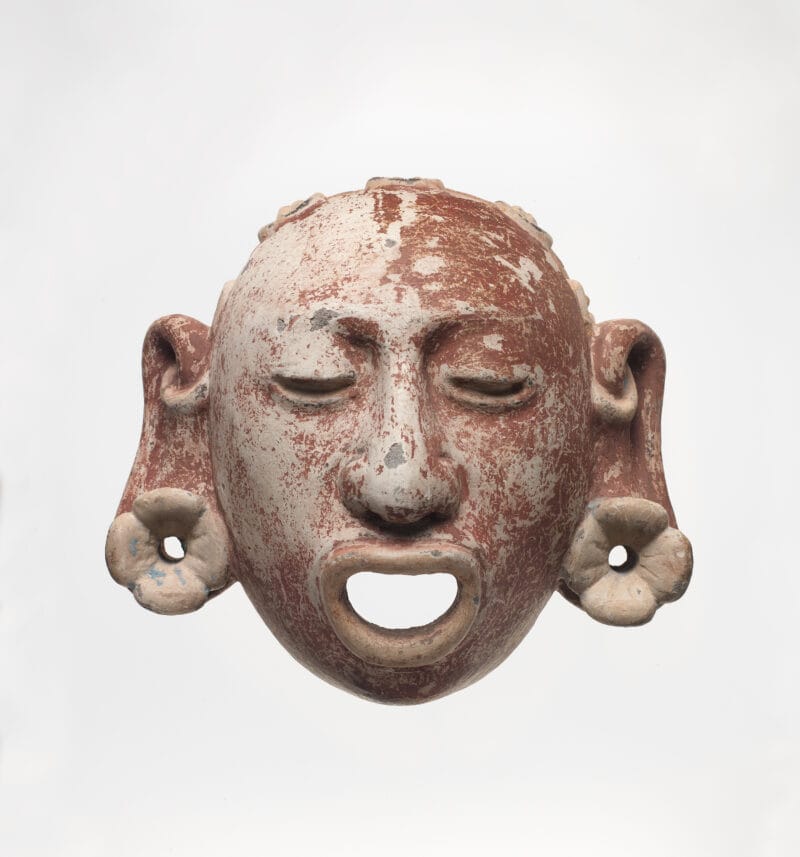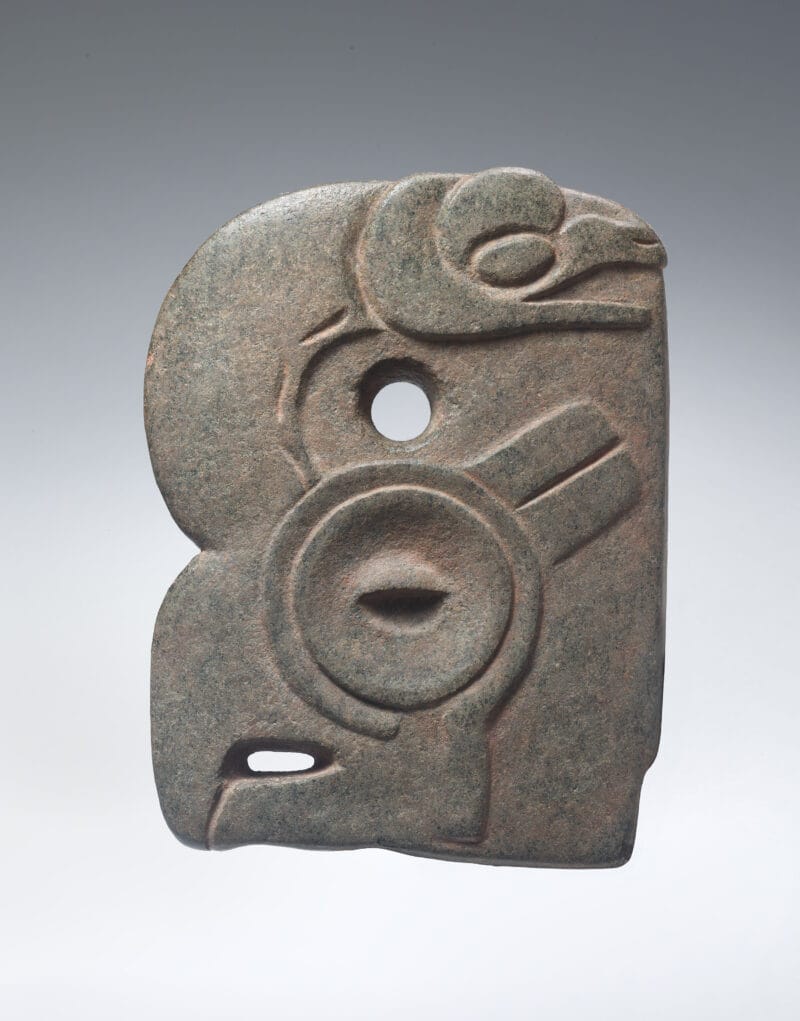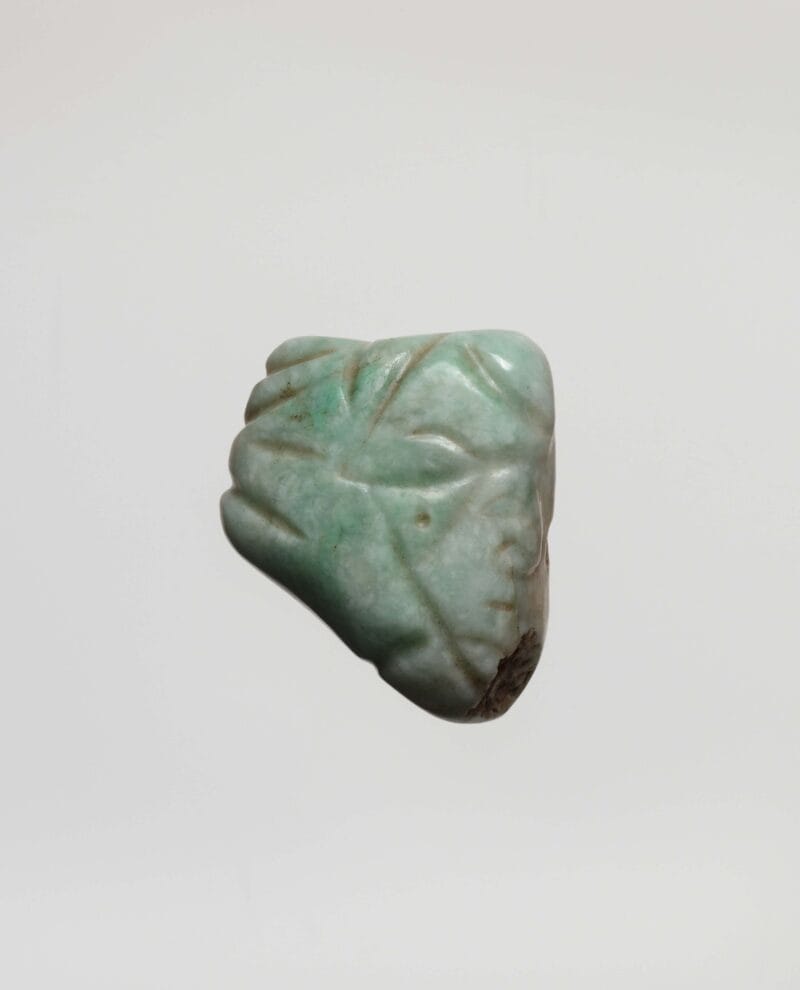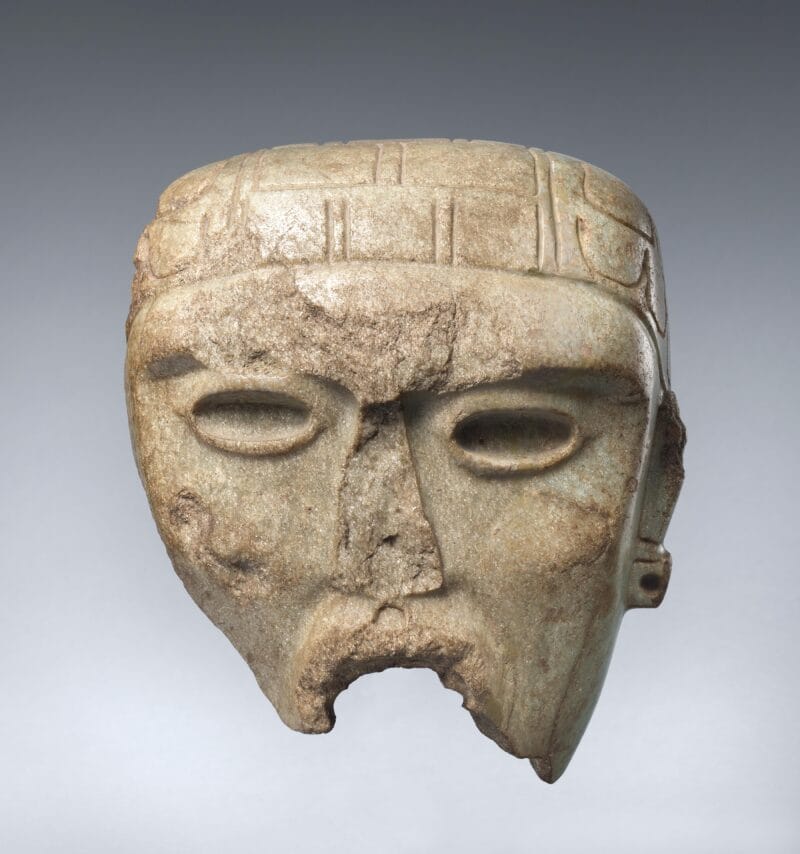
About the Object
This yoke with a distinctive human face, carved from mottled green porphyry, shares a similar style and features with earlier Olmec works that represent part of the protective clothing or decoration worn by players in the Mesoamerican ball game. The green color of the stone also reveals a connection to the cycle of life, death, and regeneration connected with the ball game and upon which the agricultural-based societies of pre-colonial Mesoamerica depended.
Additional Information
Named after the distinctive artistic traditions found in the modern Mexican state of Veracruz, this style is often expressed through connection to an important ball game, which stretches back to the Olmec civilization. In this game players wearing yokes around the waist attempted to aim a rubber ball through a stone hoop attached to the wall of a ball court in the grand urban centers of Mesoamerica. As this highly ritualized game often ended with the sacrifice of the winning or losing team, intricately carved reliefs at centers such as El Tajin depict ballplayers engaged in sacrifices to maintain divine favor; people may have believed the courts themselves to be gateways between the world of the living and the underworld.
[Sotheby’s, New York, November 23, 1992, lot 152];
[Fine Art of Ancient Lands (now Throckmorton Fine Art), New York, NY];
The Jan T. and Marica Vilcek Collection, 1993-2010;
Gift to The Vilcek Foundation, 2010;
Sotheby’s, New York, Pre-Columbian Art, November 23, 1992, lot 152.










